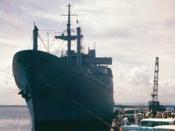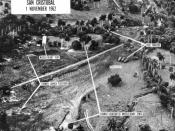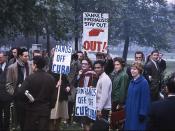For nearly forty years most American accounts of the Cuban Missile Crisis of have left Cuba out of the story. With the blockbuster film "Thirteen Days" the story now ignores the Soviet Union as well. The film turns history on its head and drums into our heads exactly the wrong lessons of the crisis.
"Why do you think the Soviets put the missiles in Cuba?" I asked my fourteen year-old daughter after she saw the film. "They were bad," she reasoned on the basis of what the film taught her. "They wanted to hurt the United States." Yes, the United States as victim, an old theme that justifies massive military build-ups.
She could not learn from "Thirteen Days" that in October 1962 the United States was waging a war against Cuba that involved several assassination attempts against the Cuban leader, terrorist acts against Cuban civilians, and sabotage of Cuban factories.[1]
The endgame of this low intensity conflict envisioned a U.S. invasion. Nor would she have know from the film that the Kennedy Administration had convinced the Soviet military that the United States was planning a first strike against its superpower adversary by rapidly building up U.S. strategic forces. In 1962, the Soviet had fewer than fifty bombers and missiles that could hit the United States. We had more than five hundred. The missile gap Kennedy exploited in his 1960 campaign was real, except that it was in the U.S. favor, not the Soviets.[2] Soviet leader Nikita Khrushchev sought to placate his generals by placing intermediate range ballistic missiles in Cuba. It was a cheaper way to provide some deterrent against a feared U.S. attack than to build many new intercontinental ballistic missiles that could be launched from the Soviet Union. [3]
Once a decision is made...


